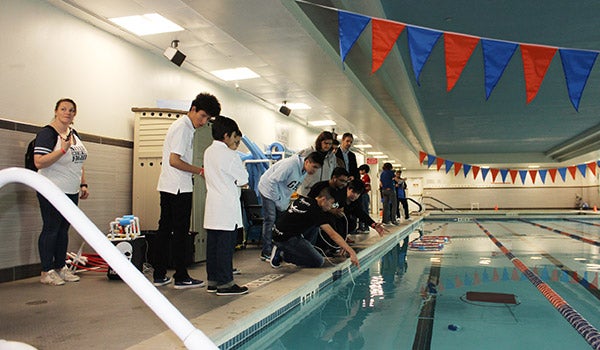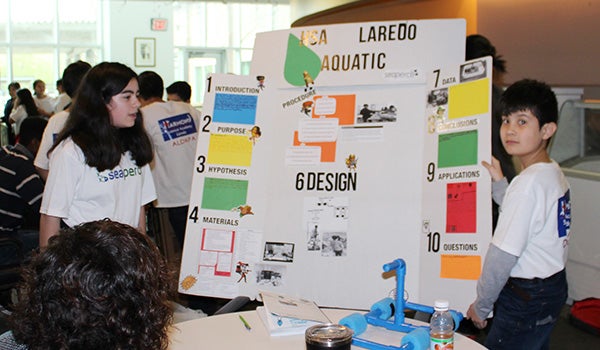SeaPerch is an underwater robotics program that culminates in a competition in which students learn STEM subjects, such as physics, marine biology, computer-aided design, 3D printing, marine engineering and applied math.
This year’s SeaPerch competition took place March 5 at Houston Baptist University’s Bradshaw Fitness Center and was attended by 130 fifth–12th grade students from Harmony Schools.
SeaPerch is organized and funded by Harmony Public Schools, the U.S. Navy and the Rice University School Mathematics Project (RUSMP). These organizations provide the resources needed to build an underwater Remotely Operated Vehicle (ROV) in an in-school or out-of-school setting.

RUSMP contributes to the SeaPerch Program by advertising the events, coordinating the meets, providing judges, and facilitating awards and medals for the winning teams. Yetkin Yildirim, RUSMP’s director of STEM projects, has played an integral role in supporting SeaPerch’s initiative.
Yildirim explained the endless possibilities of what SeaPerch has to offer. When asked about his opinion on the far-reaching benefits of exposing Harmony students to this opportunity early on, Yildirim said that “STEM is important because it pervades every part of our lives. STEM activities like SeaPerch provide hands-on and minds-on lessons for the student.”
He added, “To succeed in this new information-based and highly technological society, students need to develop their capabilities in STEM to levels much beyond what was considered acceptable in the past. STEM education creates critical thinkers, increases science literacy and enables the next generation of innovators.”

SeaPerch gives Harmony students the chance to compete in aquatic challenges designed to simulate real-world situations while strongly incorporating STEM concepts. The program’s main goal is to prepare students for future careers in water-based engineering fields. It not only gets them excited for what they might be working with in the future but also puts a fun kick to it with racing robots.
Suleyman Gecmenler, a Harmony School science teacher and one of the organizers of SeaPerch, said the United States has fallen from third to 17th in the world in the number of college graduates in engineering programs.
In the U.S. only 5% of science degrees are awarded in engineering, as compared with 50% in China, he said. “This shows that the U.S. educational system isn’t caught up with other nations in this field of learning,” he said. “If not addressed, the expected shortage of skilled workers could decrease the U.S.’s global competitiveness and may result in a lack of expertise in mission-critical areas.”
Gecmenler explained that a few teams had dominated the awards given out. Some teams, he said, joined the competition to learn and gain experience in a variety of STEM fields, while others tried for promising outcomes, and did their best not only to understand the mechanics of underwater robotics but also to aim high and excel at every aspect of the competition.
— Rahime Camuz
Bahar Kose
Sueda Sevinc
Seniha Elcik
Students at Harmony Public Schools

